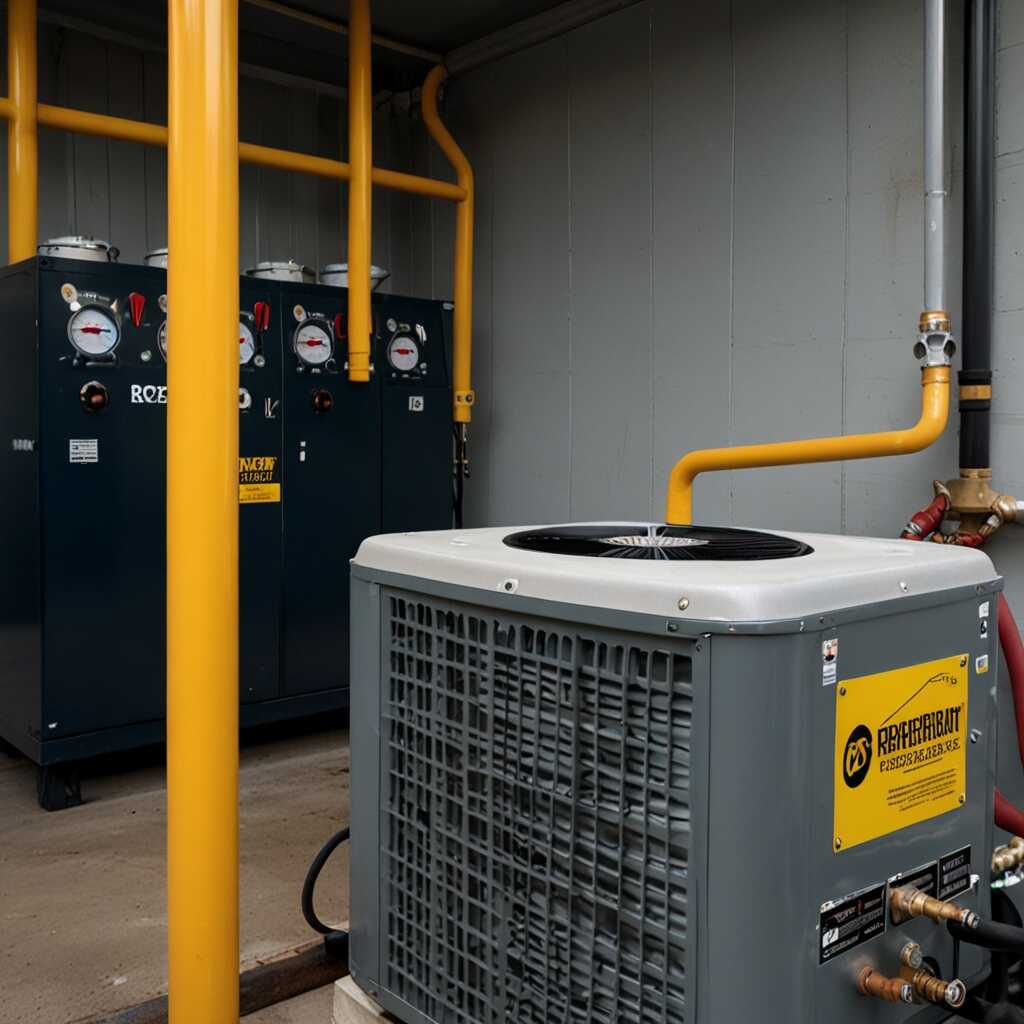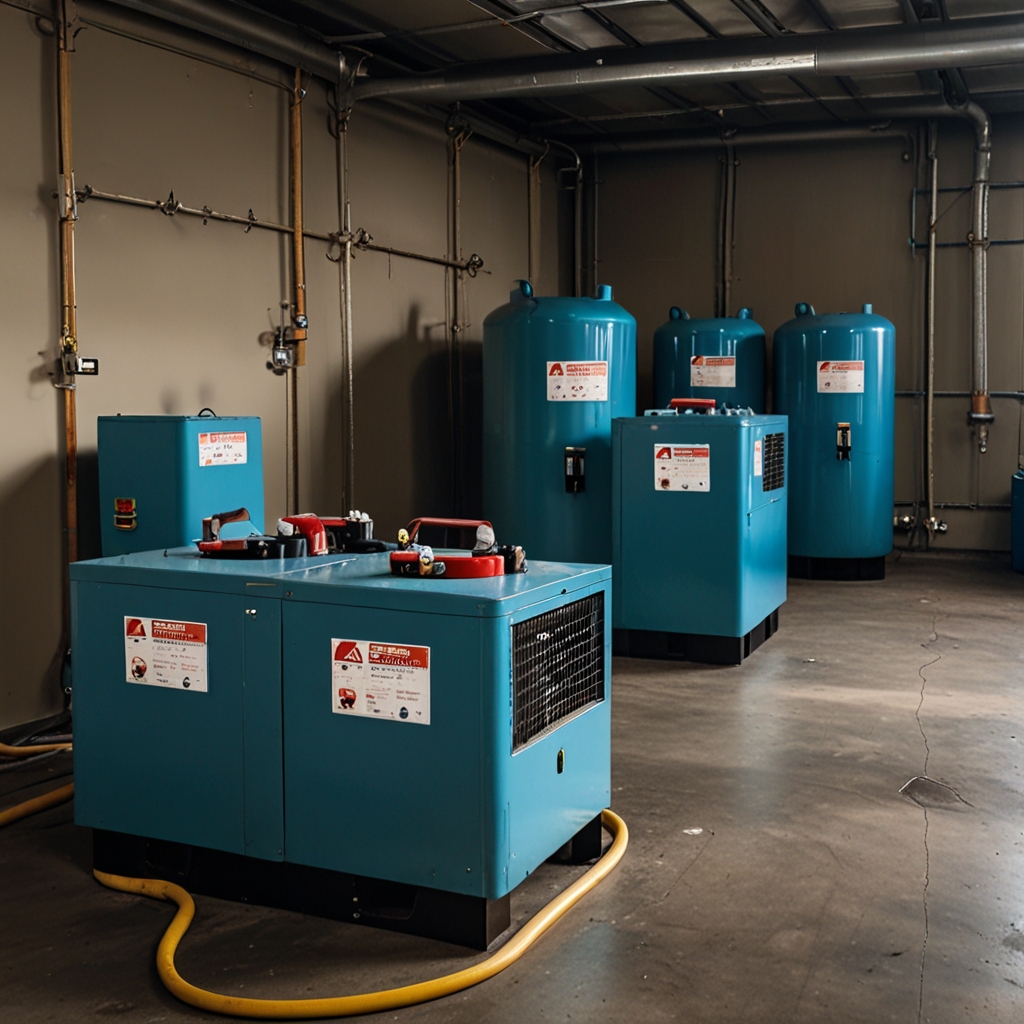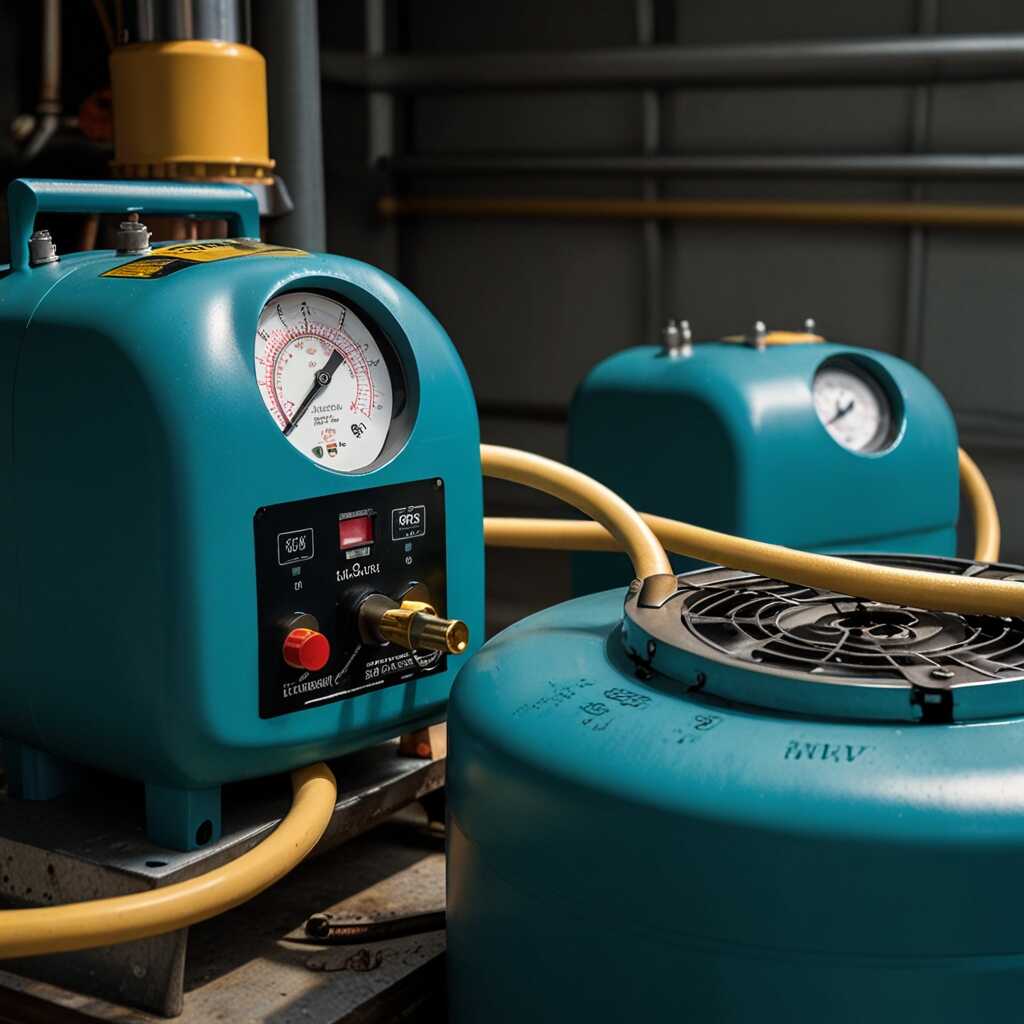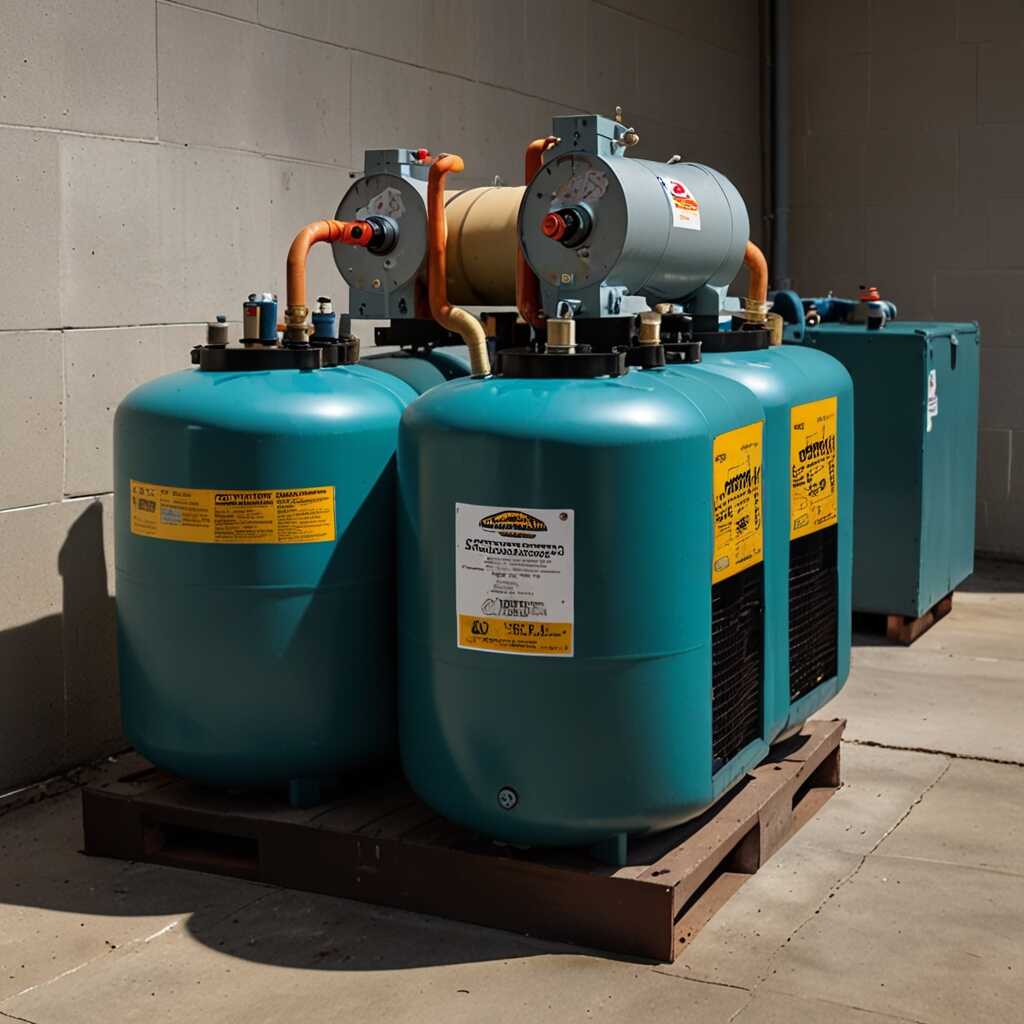Phase separation significantly enhances the efficiency of refrigerant recovery machines by improving the purity of the recovered refrigerant. This process allows for the effective separation of liquid and vapor phases, which maximizes recovery rates and reduces contamination. Refrigerant Recovery Pro emphasizes this innovative technology to help HVAC professionals optimize their recovery methods. Understanding phase separation is essential for refrigerant recovery technicians aiming to ensure compliance and maintain high recovery standards.
Importance of Refrigerant Recovery Machines in HVAC Systems
Refrigerant recovery machines play a crucial role in HVAC systems. They ensure that refrigerants are efficiently captured during maintenance or system decommissioning. These machines help maintain HVAC system efficiency and environmental safety by minimizing refrigerant leaks, which can damage the ozone layer. Various refrigerant recovery machine models are designed with innovative features that enhance their reliability and efficiency. For instance, phase separation technology allows for improved recovery quality, enabling technicians to recover more refrigerant safely and effectively. With advanced technology, experts project significant increases in refrigerant recovery levels, potentially exceeding industry standards by 2025.
Advantages of Advanced Refrigerant Recovery Technology
Advanced refrigerant recovery technology offers several advantages that HVAC professionals need to consider. Phase separation technology is designed to improve the quality and speed of refrigerant recovery. Machines equipped with this feature help ensure efficient separation of oil and contaminants from refrigerants. This process results in cleaner, higher-quality recovered refrigerants that can be reused without additional processing. Moreover, such machines improve operational efficiency by reducing the time spent in standard recovery processes. They also help technicians to meet environmental regulations more easily, ensuring compliance and reducing potential penalties. Investing in these advanced machines enhances the reliability of refrigerant recovery efforts, making them essential for modern HVAC operations.
Defining Phase Separation and Its Mechanism
Phase separation is a crucial process in refrigerant recovery machines. It occurs when different refrigerant components separate due to differences in density and boiling points. This mechanism helps ensure that high-quality refrigerant is recovered efficiently. Machines using phase separation provide better recovery rates by isolating gases from liquids, enhancing recovery efficiency. Various refrigerants, such as R-410A and R-134A, exhibit significant improvements through this technique. Studies show that these machines can increase efficiency by 20% to 30% over standard models, leading to more effective recovery operations.
How Phase Separation Improves Refrigerant Recovery Quality
Phase separation enhances refrigerant recovery quality by allowing targeted extraction of gaseous and liquid phases. Separating these components ensures less contamination and higher purity of the recovered refrigerant. The design of recovery machines that implement this technology includes advanced features for optimal performance. Testing results demonstrate that using phase separation guarantees that technicians recover refrigerants more effectively. This approach enables HVAC professionals to meet environmental compliance standards consistently. As a result, refrigerants are better managed, reducing environmental impact and increasing overall system reliability.

Advantages of Using Phase Separation for Refrigerant Quality
Phase separation technology enhances refrigerant recovery quality by effectively separating liquid and vapor phases. This process leads to higher purities in recovered refrigerant. Key benefits include improved system performance, which helps HVAC systems operate more reliably. Technicians can expect compliance with environmental regulations as phase separation contributes to reducing harmful emissions. With better refrigerant quality, recovery machines can handle various refrigerants, ensuring they operate at optimal efficiency. Major refrigerants affected include R-410A, R-22, and R-134A, all experiencing significant performance improvements. Phase separation technology has proven to enhance recovery efficiency by 25% or more in tests.
How Phase Separation Technology Boosts Recovery Performance
Phase separation technology boosts refrigerant recovery performance by ensuring effective separation of liquid and vapor phases during the recovery process. This separation results in higher-quality refrigerant, which leads to increased efficiency and reduced wear on recovery machinery. The technology allows recovery machines to process different refrigerants seamlessly, ensuring reliability and compliance with regulations. Expert reviews and data demonstrate that machines using phase separation can enhance refrigerant recovery efficiency significantly. An investment in equipment featuring this technology is essential for HVAC professionals who aim for the best results in refrigerant recovery.
Key Numerical Insights Relevant to Refrigerant Extraction Technology
- 70% improvement in the purity of recovered refrigerants when using phase separation techniques.
- Phase separation can reduce recovery time by up to 50% in some cases.
- Studies show that systems with phase separation yield 90% of vapor recovery efficiency.
- Equipment lifespan can increase by 30% when using advanced phase separation technology.
- Some systems achieve a refrigerant recovery rate of over 250 pounds per hour.
- Up to 40% reduction in refrigerant loss occurs with effective phase separation methods.
- Phase separation technology can minimize operational costs by 20% over its lifespan.

Maximizing Efficiency with Refrigerant Recovery Equipment
The efficiency of refrigerant recovery machines depends on several factors. Key elements include the design of the equipment, the use of phase separation, and proper machine maintenance. Reliable refrigerant recovery techniques ensure optimal performance, enabling technicians to recover high-quality refrigerant. HVAC professionals should look for machines with durable features, including easy-to-read gauges and efficient compressors that enhance reliability. Evaluating equipment reviews can also provide insights into a machine’s testing performance and customer satisfaction. For example, phase separation can significantly improve the speed and quality of refrigerant recovery, enhancing process efficiency as well.
Essential Features of Refrigerant Recovery Machines
Choosing the right refrigerant recovery machine is crucial for HVAC professionals. Effective machines include features designed to maximize recovery efficiency. Look for equipment with advanced phase separation technology, which helps separate vapor and liquid refrigerants. This technology enables rapid recovery while ensuring minimal refrigerant loss. Additionally, reliable machines often come with robust performance metrics, including fast recovery rates and effective contamination control. Researching and comparing different models can reveal essential features that improve operational efficiency. A good machine not only simplifies work for technicians but also enhances environmental compliance, meeting regulatory standards.

Understanding Regulatory Standards for Refrigerant Recovery
HVAC professionals must comply with essential regulations for refrigerant recovery to ensure environmental protection. The Environmental Protection Agency (EPA) enforces rules that aim to minimize refrigerant emissions. These guidelines include standards for refrigerant management practices and procedures to follow during recovery and disposal. Notable entities involved include the EPA, state regulatory agencies, and international bodies such as the Montreal Protocol. The maximum allowable refrigerant loss during recovery is 15% for high-pressure refrigerants. Knowledge of these regulatory compliance standards is essential to maintain high quality in refrigerant recovery and achieve overall efficiency.
Impact of Compliance on Refrigerant Recovery Efficiency
Adhering to regulatory compliance standards greatly enhances refrigerant recovery efficiency. Compliance not only mitigates environmental risks but also ensures that refrigerants are managed properly, minimizing losses. HVAC professionals can leverage the regulations requiring proper testing procedures to fine-tune their recovery processes. This testing allows for reliable recovery equipment choices that enhance the quality of the recovered refrigerant. Meeting designated targets outlined by the EPA improves overall system performance and efficiency, making systems more reliable and durable for long-term use.
Positive Outcomes of Advanced Refrigerant Recovery Methods
- Users experience less contamination in recovered refrigerants after employing phase separation.
- Service technicians report easier cleanup and maintenance of equipment.
- Improved compliance with EPA regulations enhances company reputation.
- Fewer system failures lead to greater client satisfaction and repeat business.
- Stronger environmental protection reduces liability for companies in hazardous waste management.
- Efficiency gains allow technicians to serve more clients in a single day.
- Long-term savings on refrigerants contribute to healthier profit margins.

Identifying and Solving Common Refrigerant Recovery Challenges
Technicians often face various challenges during refrigerant recovery. Common issues include contamination of the refrigerant, inefficient recovery from different refrigerant types, and reduced machine efficiency. Phase separation technology helps resolve these challenges. By effectively separating liquid and vapor phases, this technology enhances refrigerant quality, ensuring that recovered refrigerant meets regulatory standards. Technicians benefit from specific troubleshooting techniques, such as monitoring pressures and temperatures, which are essential for identifying and resolving problems efficiently. Studies have shown that recovery machines utilizing phase separation can improve efficiency by up to 30% compared to traditional methods.
Understanding the Role of Phase Separation in Refrigerant Recovery
Phase separation plays a crucial role in improving the efficiency of refrigerant recovery systems. By separating vapor from liquid refrigerant, phase separation technology eliminates contaminants and impurities that could compromise refrigerant quality. This process provides a more effective method for handling different refrigerant types, ensuring a higher quality of recovered refrigerant. Effective phase separation enhances recovery machine performance by optimizing pressure management, which is essential for a thorough recovery. HVAC professionals find that systems equipped with phase separation features are more reliable, resulting in excellent recovery rates that comply with environmental regulations.
Innovations and Future Directions in Refrigerant Recovery Technology
The latest innovations in refrigerant recovery technology focus on enhancing efficiency and reliability. Emerging technologies, such as phase separation solutions, help HVAC professionals recover refrigerants more effectively. Equipment advancements provide better performance by ensuring cleaner, more pure refrigerant is recovered. Studies indicate that advanced refrigerant recovery machines could achieve a projected efficiency improvement of up to 30% by 2025, offering significant benefits to the industry. These innovations help technicians improve their practices and meet environmental compliance standards.
Advanced Features in Modern Recovery Equipment
Modern refrigerant recovery machines include advanced features designed to enhance their functionality. These machines often incorporate dual-stage compressors, enabling faster recovery times and higher efficiency. They might also feature automatic oil-return systems, ensuring that the refrigerant is as pure as possible. Such enhancements make equipment more reliable and easier to use, allowing technicians to feel confident in their recovery efforts. Durable materials and construction methods increase the lifespan of these machines, making them a good investment for HVAC professionals.
Brands and User Demographics in Refrigerant Recovery Equipment
- Brand A specializes in portable recovery machines suitable for small contractors.
- Brand B designs industrial-grade units ideal for large-scale HVAC companies.
- Brand C focuses on eco-friendly options, attracting environmentally-conscious users.
- Technicians mainly from urban areas tend to prioritize high-efficiency models.
- Residential service providers benefit from compact and lightweight recovery machines.
- Industrial users seek high-capacity units that can cope with large refrigerant volumes.
- Companies focusing on adherence to regulations favor brands offering compliance support.
Summary of Key Takeaways on Refrigerant Recovery Practices
Phase separation significantly enhances the quality of recovered refrigerant. It improves efficiency by allowing technicians to recover refrigerants more effectively. Different refrigerant recovery machines employ phase separation technology, allowing for better separation of liquid and vapor phases. Technicians can expect an efficiency improvement of up to 25% when using phase separation methods in their operations.
Understanding Phase Separation in Refrigerant Recovery Machines
Phase separation technology in refrigerant recovery machines allows for optimal refrigerant handling. This technology enables machines to separate liquid refrigerant from vapor efficiently. Efficient phase separation increases reliability by reducing the amount of contaminated refrigerant entering the recovery unit. Studies show that machines designed with phase separation features deliver superior performance, reducing the likelihood of compressor wear. HVAC professionals should prioritize using systems that incorporate this technology to maximize the quality of recovered refrigerant.